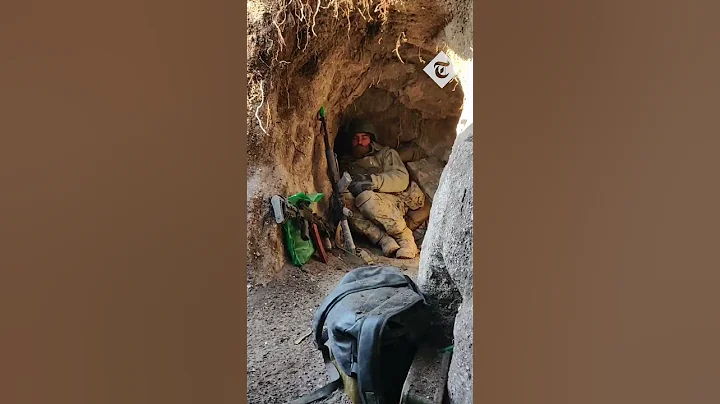On July 13, the first prototype of the new-generation stealth armed helicopter "Indomitable 360" developed by Bell Company for the U.S. Army was publicly unveiled. Although the U.S. Army has not determined the selection of the next-generation armed helicopter at this stage, Bell and Sikorsky 's "Raider X" are already undergoing various intense pre-flight preparations in anticipation of winning the bid for the United States' next-generation armed helicopter project.

However, after Bell released the first prototype of the "Indomitable 360" and saw the design ideas and overall details of the entire prototype, I personally feel that is completely unnecessary for the People's Liberation Army in the development of the next generation of armed helicopters. It's not worth crossing the river by touching the eagle sauce like before. On the contrary, in the development of the next generation of armed helicopters, we should follow the example of advanced weapons and equipment such as the J-20, Dongfeng 17, which are sought after internationally, and embark on our own advanced and powerful path.


Why the Indomitable 360 Wuzhi is no longer worth learning from:
Compared with the Apache armed helicopter currently in service in the U.S. Army, although Bell's latest release of the "Indomitable 360" armed helicopter focuses on enhancing its stealth performance, it has never From a structural point of view, it is still a traditional single rotor + Silent advantage.


However, this layout also has a slow flight speed. Once the tail rotor fails or is hit, it is easy to fall into the huge risk of tail spin crashing. After all, with its single-rotor + tail rotor power design, under normal flight conditions, the tail rotor on the tail boom does not participate in the helicopter's flight propulsion function, but is only used to maintain the helicopter's flight attitude stability. If the tail rotor has a flight failure or is hit by gunfire and cannot continue to provide thrust to stabilize the flight attitude, the entire helicopter will quickly lose stability and then crash.


Moreover, when a traditional helicopter needs to fly at high speed, the main rotor not only needs to downwardly provide lift for takeoff, but also needs to be deflected to generate a part of oblique backward thrust to help the helicopter fly forward. However, in this process, greater lift requires more blades, and more blades will produce greater flight resistance during high-speed flight. In addition, the tail rotor, which is only responsible for stabilizing the flight attitude, will not be used during normal flight. China will take away more than 20% of the engine output power, so this is why the maximum flight speed of most single-rotor + tail rotor helicopters is generally only about 300 kilometers per hour.


So why most countries have been developing a new generation of compound helicopters in recent years, such as coaxial twin-rotor helicopters. In addition to fast flight speed, the biggest advantage is that although there is still a tail rotor, this tail rotor is no longer It is the tail rotor that stabilizes the attitude of the fuselage, but it is the tail rotor that further increases the flight speed, so even if the tail rotor is hit, it can still fly at low speed and land safely.

Moreover, in the traditional single-rotor design, in order to increase the take-off weight of the helicopter, the number of main rotor blades is not only larger, but also the length of a single blade is longer. This not only increases the flight resistance, but also the denser blade arrangement makes the unit When the rotor cuts through the same airflow within a certain period of time, although the lift is greater, the noise is also greater.

On the other hand, although the main rotor blades of the coaxial twin-rotor design have upper and lower layers, the number of single-layer blades is smaller, and the coaxial design also makes the length of a single blade shorter, and the linear speed of blade tip is lower , will not exceed the speed of sound, which makes its flight noise smaller. So this is also the reason why we have no need to learn from the new generation of American armed helicopters.

Prospects for China's future armed helicopters:
Although my country's new generation of armed helicopters has not yet appeared at this stage, in terms of both long and short aspects, we are actually making steady progress.
In the short term, when our country was developing the straight-10 armed helicopter , although it was initially positioned as a 10-ton heavy-duty armed helicopter like the Apache , due to the limitations of the power system, we finally The produced and 10 directly turned into a 7-ton medium-sized armed helicopter.

But now that 10-ton general-purpose helicopters such as the Z-20 have been put into service in batches, for our country we not only have suitable general-purpose/assault/ship-based anti-submarine/search-and-rescue helicopters, but also the Z-20 is equipped with independently developed equipment in our country. The new generation of high-power power system also allows our country to have no technical restrictions at all in the development of 10-ton heavy-duty armed helicopters.

So in the short term, we can completely base it on the excellent power system of the Z-20. Without changing the core components such as the engine, transmission, and rotor, it will be the same as the US Navy UH-1Y and AH-1Z, based on the same power. Under the premise of system and avionics system, different airframes can be connected to realize the development of general helicopters and armed helicopters on the same platform. And in order to further improve the future battlefield adaptability of the improved Z-10, we can completely design the entire fuselage into a stealth design while maintaining the aerodynamic layout of the current Z-10, and develop a stealth version of the improved Z-10 and stealth version. The Z-20 version is coming out, and these two major stealth helicopters can already compete head-to-head with the latest generation of armed helicopters released by the United States.



From a long-term perspective, we have already been conducting various technical tests regarding the technologies related to the next generation of advanced helicopters, whether it is composite propulsion technology, high-power turboshaft, advanced avionics, stealth and other related technologies. It's just that at this stage, Army Aviation has not yet entered an era where it must enter stealth. After all, our Z-10s only started to enter large-scale equipment service, and it is still very early before they are retired, so we are not in a hurry to develop a new generation of stealth armed helicopters.

And from a long-term perspective, various advanced technologies are constantly emerging with the development of the times. We are not in a hurry to develop a new generation of armed helicopters at this stage. Instead, we can use the advantage of being a latecomer to adopt more advanced technologies at the technical level of the new generation of helicopters. Many advanced technologies, such as our next-generation armed helicopter, not only have stealth performance including radar , infrared, acoustics, visual and other aspects, but our helicopters will also have the advantage of faster flight speed, which can enhance Its battlefield survival rate and after discovering the enemy situation, it can arrive at the scene with a shorter reaction time, increasing the chance of winning on the battlefield.

So for the People's Liberation Army, the United States' development ideas are no longer worth learning from.





















